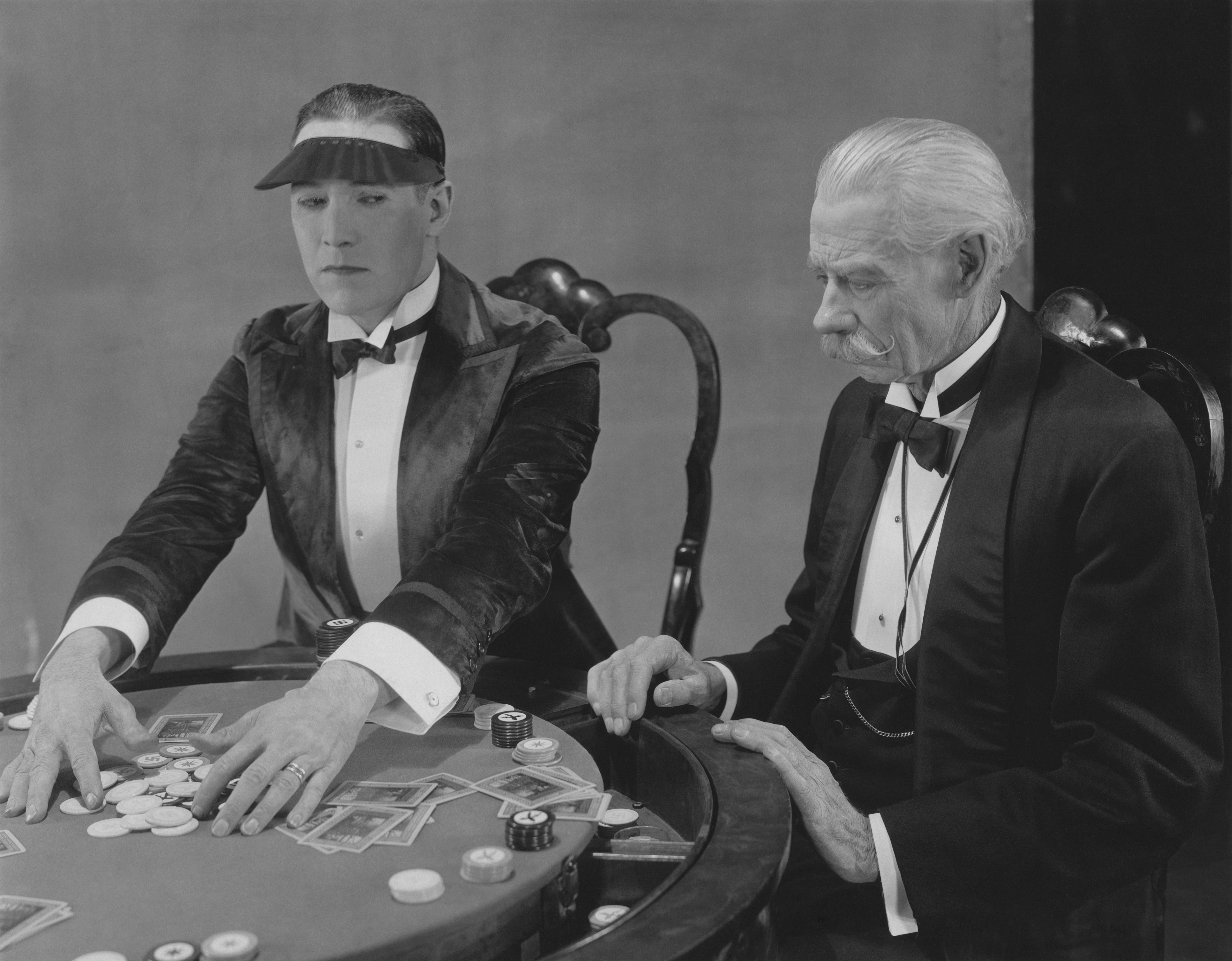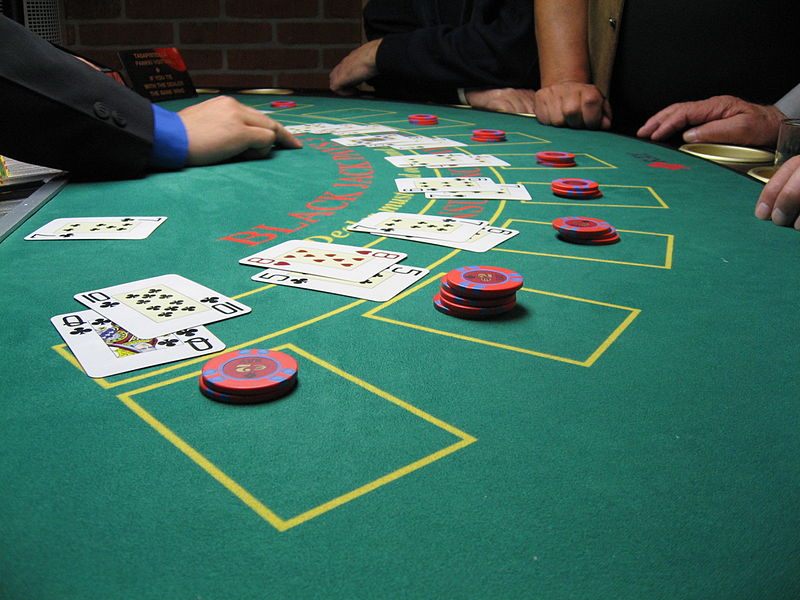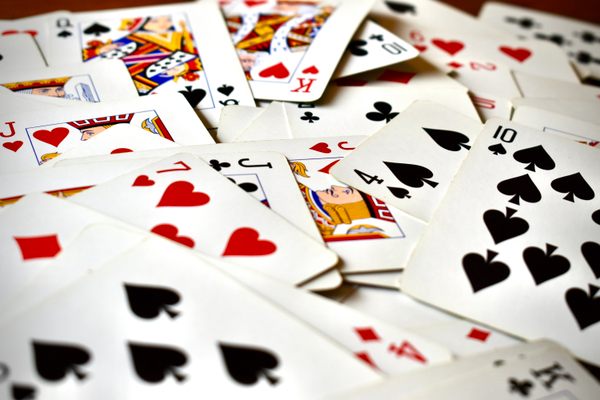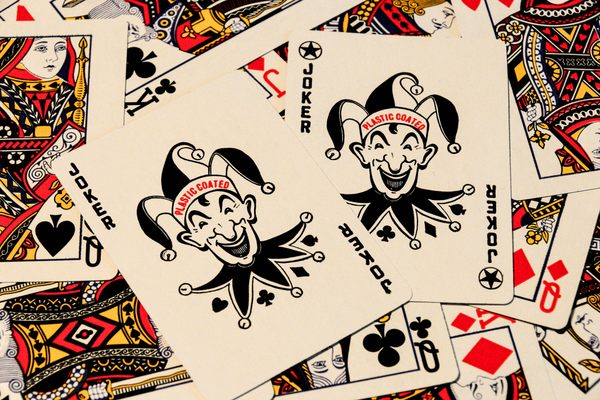The High Stakes History of Card Counting (And Its Uncertain Future)
 (Photo: Everett Collection/shutterstock.com)
(Photo: Everett Collection/shutterstock.com)
“It’s a tough way to make an easy dollar,” says Josh Axelrad, a former professional card counter and the author of Repeat Until Rich, a memoir of his card-counting days. Card counting, thanks to movies like Rain Man and 21, holds a position in the popular imagination as a near-superhuman savant ability, a method to help card-players cheat, or both.
In fact it’s neither, but that hasn’t stopped the casino industry from waging war against card counters. In fact, we’re right now in the midst of a change in the rules of blackjack, a change that seems minor but which blackjack aficionados claim is murdering the game.
And it’s a change that may kill card counting for good.

Card counting as a process was created first by a group of U.S. Army Engineers known, no joke, as the Four Horsemen. They published a little-seen paper in 1957 titled “Playing Blackjack to Win.” That work was drawn upon and improved by a mathematician named Ed Thorp in a 1962 book titled Beat The Dealer, which became a huge smash success. (There’s no ill will there; Thorp wrote the foreword to a recent edition of “Playing Blackjack to Win.”) Thorp used early computers to prove, building on various earlier work in the field of probability in addition to the Horsemen’s paper, that the strategy of card counting could give a blackjack player a very, very slight edge over the casino.
 A 1966 edition of ‘Beat The Dealer. (Photo: Vintage Publishing)
A 1966 edition of ‘Beat The Dealer. (Photo: Vintage Publishing)
Play long enough, and the odds are in your favor, which is more than can be said of other casino games.
What was Thorp’s key finding? “Blackjack is different from other card games because sequential hands are dealt out of a randomizing device whose composition changes in an observable way from round to round,” says Axelrad. In other words, the outcome of one hand of blackjack has an effect on the following hand: in a game of blackjack using a single deck of cards, for example, if the Ace of Hearts is dealt in one hand, the Ace of Hearts will not be dealt in the next hand. (Providing the dealer doesn’t shuffle in between hands.)
That’s highly unusual for casino games. In roulette, for example, each spin is totally independent of the spin that came before and the spin that came after. You can scowl and study roulette all you want; you’re not going to learn anything. But blackjack is different, and that difference opens a teensy tiny door for counters.
The Mechanics of Card Counting
Card counting is a blanket term for all versions of one particular technique used in the game of blackjack (and, less often, in blackjack variants like Spanish 21). The technique is incredibly simple, at its core: it’s an attempt to keep track (“count,” obviously) of some key patterns in the cards that have already been dealt, which in turn gives you insight into which cards are still remaining to be dealt. It allows you, basically, to have a little bit more information about what cards you’ll be dealt next.
Card counting does not require you to memorize every single card that’s been dealt, nor does it require any particular advanced mathematics to use. The most basic method goes like this.
High cards, meaning the 10, Jack, Queen, King, and Ace, are good for the player; the more of those left in the deck, the better, thanks to statistical quirks of the game discovered by Thorp. Low cards, ranging from the 2 to the 6 (or sometimes the 7), are bad for the player. A card counter simply counts these cards, as the dealer grabs them from the deck and deals them out, giving each low card a +1 and each high card a -1. There’s no need to remember any specific card; all the card counter has to do is keep track of this one number. A high, positive number means that there are a lot of high cards left in the deck. A negative or low positive number means there are low cards left in the deck. Bet very very high when you have a high count, bet as little as possible (preferably nothing, by getting up and leaving the table) when the count is low.
That’s it for the basics, really. The mechanics of card counting can get more precise, but they don’t become exponentially more difficult. There are various specific rules to card counting techniques; some might assign numbers like +2 or -0.5 to cards to get a more detailed count, and some counters might keep track of aces, but that’s not where the difficulty comes in. The difficulty comes from the casinos, and trying to actually put the technique into practice.
 (Photo: Split the Deck/flickr)
(Photo: Split the Deck/flickr)
Card counting isn’t cheating by any definition I can come up with, any more than it’s cheating for a tennis player to study his opponent before a match. It’s a skill, one that anyone can learn, though of course it’s fantastically difficult to use in practice and, according to Axelrad, not really worth the effort for the recreational player.
Casinos Do the Math
Where things get complicated is that casinos hate card counters.
After the publication of Thorp’s book in 1962, casinos began implementing any method they could to block card counters. Dealers and pit bosses were trained to recognize telltale signs of card counting. The easiest, of course, is betting that seems wild and erratic, veering from betting the bare minimum to ten or a hundred times that seemingly at random. Of course it couldn’t be less random, which is not something casinos want to happen at their tables.
One of the most common techniques casinos use to thwart card counters is by repeated shuffling. Upon each shuffle, when all cards are hauled back and randomized, a card counter’s carefully maintained count becomes worthless; he or she must start over at zero. Shuffles are done at set intervals (called “shoes”) mandated by the casino, and the percentage of cards dealt before the shuffle is of key interest to card counters. That percentage is known as “penetration,” or “pen,” and card counters rely on very high penetrations.
 The Strip in Las Vegas. (Photo: Anthony Quintano/flickr)
The Strip in Las Vegas. (Photo: Anthony Quintano/flickr)
If a dealer is using five decks of cards, and shuffles after one deck’s worth of cards are dealt, that table is essentially worthless to a card counter; he or she only has data on a minuscule 20 percent of the available cards. Without that data, the card counter has basically no idea what cards might be dealt next. Most card counters need a penetration of at least 60% in a one-deck game, and 75 percent in a six-deck game. Casinos can shuffle frequently to foil card counters, but they’ll also be losing money. It takes time to shuffle cards, for one thing, which is time that could be used to vacuum cash out of gamblers’ pockets. For another, the end of one shoe is often seen as a recess for gamblers, a convenient time to exit the game. Shuffling frequently means more frequent exits, and thus fewer gamblers.
Ah, but how does a card counter have any idea what the penetration is, or how long the shoe is, or even how many decks of cards a given table is using? To ask a dealer would be a dead giveaway of a card counter’s true intentions. “The nature of card counting is such that information is really valuable,” says Axelrad. This kind of data is guarded jealously, or, well, published. The bible of blackjack data gossip is a monthly newsletter called Current Blackjack News, which costs $109 per year for a subscription. Current Blackjack News sends card counters out into the field to see the lay of the land at various casinos around Las Vegas and report their findings.
Another key tool for card counters are the various computer simulators that help train you under all kinds of different scenarios. How many decks? How deep is the penetration? Should you maybe try increasing your betting when your count hits 20, or 22, or 28? Axelrad’s favorite is called CVData, which costs a whopping $170. But it’s worth it; you need to keep your skills up while doing this.
 A Blackjack game in progress. (Photo: Public Domain)
A Blackjack game in progress. (Photo: Public Domain)
That’s because you’ll need to be able to, very nearly, count cards with your eyes closed. Or, at least, with your eyes heavily lidded. “In a world without casino interference, you’d play one way. But in the real world, where casinos are looking out for the exact thing you’re doing, you have to make certain concessions to reality,” says Axelrad. The real game is what he terms the “meta-game,” the spy vs. spy of a card counter performing the intensive task of counting cards while attempting to prevent a trained observer from noticing what’s happening.
There are all kinds of ways to do that. You can act drunk. You can do what’s called “back-counting,” in which you stand behind other players, pretending, maybe, to be just a casual friend, while counting cards and waiting for the count to get high enough that you want to jump in and bet high. Or you could do what a team from MIT did, starting in 1979, and play in a group.
The Dream Team
The MIT Blackjack Team is perhaps the most famous crew of card counters of all time; their story was made into the 2008 movie 21. Their card-counting strategy was not especially complex, but their meta-game was. The MIT group vigorously tested young card counters and sent several of them to different tables at one casino. The card counters would play extremely conservatively, betting very low and making no sudden movements to indicate to pit bosses or dealers that anything untoward was happening. If the count got high enough, they’d make a quiet signal to a “Big Player,” or BP, who would swoop in and make giant bets. The card counting minion would let this happen until the cards were shuffled or the count got too low, at which point he or she would send another signal to send the BP away from the table. That method eliminates the telltale sign of a card counter, erratic betting, by splitting it into two parts: instead of one person betting low and then suddenly betting high, you have one person who bets low and one person who bets high. Nothing weird about that!
 Casinos in Atlantic City. (Photo: Jon Bilous/shutterstock.com)
Casinos in Atlantic City. (Photo: Jon Bilous/shutterstock.com)
The weirdest part about card counting is how it shines a light into the deep, inherent unfairness of casinos. The myth of the casino is that, sure, the odds are stacked against you, but with enough luck and maybe skill, you can break the bank. In reality casinos try to force out card counters for having, in effect, too much skill. “Usually they want you to go quietly, because their position is ultimately indefensible,” says Axelrad. “What they don’t want to do is come up to a table where there are regular gamblers also and say, ‘Hey you guys, you’re all fools and will lose all your money, so play comfortably. This guy is playing a legitimate strategy that will cause him to win and we don’t actually allow that.’”
Card counting is not illegal. In fact it’s so thoroughly not illegal that in some places it’s legally protected. In 1979, Blackjack Hall of Fame inductee Ken Uston sued Atlantic City casino operator Resorts International for banning him from counting cards in their casinos. The case went to the New Jersey State Supreme Court, and ended with a ruling that card counting is legal and protected in the state of New Jersey. Of course, casinos in Atlantic City will still try to stop card counters; it remains legal for them to try to distract counters, or shuffle after every hand, or institute a suddenly reduced maximum bet, without saying why. In Vegas, a casino can still simply throw a card counter out for counting cards, claiming the right to refuse service for any reason—even if that reason is that the player is just too good.
 Inside The Venetian Las Vegas. (Photo: Santcomm/WikiCommons CC BY-SA 3.0)
Inside The Venetian Las Vegas. (Photo: Santcomm/WikiCommons CC BY-SA 3.0)
Where it gets weird is what’s been happening in the past year or so in some of Las Vegas’s biggest casinos. The Venetian, the Palazzo, and the MGM Grand have all changed their blackjack payout rules, moving them from the traditional 3:2 payout to a 6:5 payout. The payout refers to the ratio of money that you can win from a hand. If you simply win, you make back as much as you put in, effectively doubling your money. But if you score a blackjack, or 21, the payout has historically been 3:2, meaning if you bet $10, you’d earn $15 back, more than doubling your money. Under the new payout rules, if you bet $10 and score a 21, you would earn $12 rather than $15. Seems like a small deal, but card counters have to play thousands of hands to make use of the tiny statistical edge their technique gives them. “Without a 3:2 payout, it is not blackjack. At all. It’s similar to playing roulette, or some other godawful game,” says Axelrad
The change may not directly be a response to card counters; there’s no real evidence that card counting is on the rise, but as Pacific Standard points out, there’s very clear data that says blackjack players are rapidly decreasing. The change in blackjack payouts bumps the casino’s earnings, but it also puts a dent in that tiny, precious margin of advantage that a card counter has, to the point where, for most serious blackjack players, any table with a 6:5 payout simply isn’t worth playing. “Blackjack has basically been removed from the tables of Vegas and nobody knows it,” says Axelrad. Nobody but the counters, that is.







Follow us on Twitter to get the latest on the world's hidden wonders.
Like us on Facebook to get the latest on the world's hidden wonders.
Follow us on Twitter Like us on Facebook